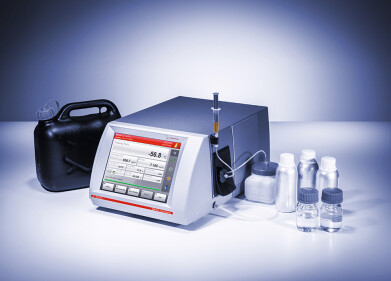-
 SETA D-2 Handheld Conductivity Sensor
SETA D-2 Handheld Conductivity Sensor -
 Seta-D2 in-line Conductivity Sensor
Seta-D2 in-line Conductivity Sensor
Fuel Analysis
Innovating Aviation Fuel Conductivity measurement
May 20 2013
Conductivity is an important parameter for safe and economic handling of fuels which have the potential to accumulate static charge.
Aviation fuels are highly refined with very low conductivity. To help ensure safe fuel storage and distribution, Airlines and regulatory bodies have established ASTM D2624 for Electrical Conductivity of Aviation and Distillate Fuels and ASTM D1655 for specifying permissible levels of fuel conductivity. Static Dissipative Additive (SDA), or conductivity improver, is often added to fuel to achieve specification levels. The electric charge from the fuel dissipates into the walls of the storage tank or pipeline thereby reducing the potential for sparking to occur.
Traditional fuel conductivity measurements rely on Direct Current (DC) based electrical sensor instruments which have considerable limitations. DC voltage measurement requires the fuel test sample to be absolutely still, are time dependent and temperature sensitive which compromises precision and repeatability. In addition DC sensors cannot be used for conductivity measurement of fuel directly flowing in pipelines.
SETA D-2 Technology from Stanhope Seta (UK) has launched a range of new Alternating Current (AC) Handheld Fuel Conductivity Sensors which offers the aviation industry a totally new dimension in fuel conductivity management to ASTM D2624. AC sensor technology does not require the fuel sample to be static and the measurement is not as temperature sensitive. This provides improved repeatability and reproducibility with less opportunity for measurement errors, the sensors are also easily calibrated in the field. Significantly this technology also permits reliable real time in pipeline conductivity measurements.
The SETA D-2 in-line Conductivity Sensor provides real time measurement in the product line with 24/7 recording capability that can be integrated directly with fuel management systems. Upstream in-line conductivity measurement allows monitoring of incoming fuel quality before additive injection occurs which greatly reduces the risk of under or over injection and with potential for significant cost saving.
The in-line Sensor is suitable for long-term immersion in fuels. It is easily fitted and retracted from the pipeline via a retractable mount which operates through a full-port stainless ball valve. The sensor is ATEX/FM/FMc rated explosion-proof and intrinsically safe for 2-Wire loop (4-20 mA) operation in hazardous locations, a high pressure version is available.
In-line conductivity measuring forms the nerve centre of D2’s Precision injection systems, skid mounted process control systems which monitor and control neat additive as it is blended directly into the fuel stream eliminating the need to mix additives before injection and preventing potential for incorrect additive volumes.
Digital Edition
PIN 25.5 Oct/Nov 2024
November 2024
Analytical Instrumentation - Picturing Viscosity – How Can a Viscometer or a Rheometer Benefit You? - Sustainable Grease Formulations: Evaluating Key Performance Parameters and Testing Method...
View all digital editions
Events
Dec 19 2024 Aurangabad, India
Jan 20 2025 San Diego, CA, USA
Jan 22 2025 Tokyo, Japan
Jan 25 2025 San Diego, CA, USA
SPE Hydraulic Fracturing Technology Conference and Exhibition
Feb 04 2025 The Woodlands, TX, USA


















